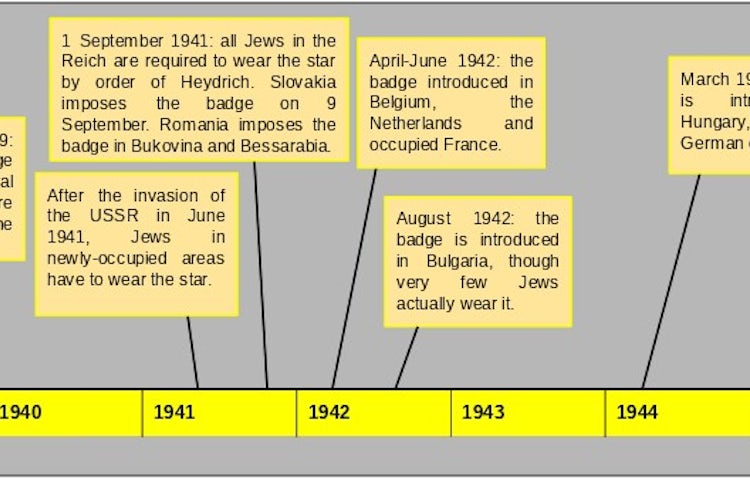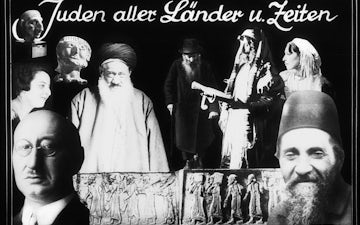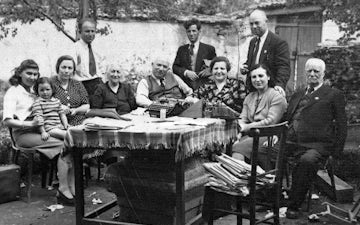
Nazi racial laws classified who was Jewish and who was not along “racial lines”, on the false basis that Jewish identity was a biological inheritance. Between 1939 and 1945, many Jews across Europe were required to wear badges and insignia identifying them as Jewish to facilitate the policing of the Nazi racial laws. This ensured what Heydrich described as “control of the Jew through the watchful eye of the whole population”. In addition, Jewish inmates of the concentration camps were always identified as Jews through the system of labelling prisoners with coloured triangles. Although the phrase “Yellow Star” has become an important symbol of the Holocaust, it is more accurate to speak of “Jewish badges” than of the Yellow Star because designs and colours varied.
Jews were often required to wear special clothing or colours in the centuries before the Holocaust. The earliest recorded instances of the use of badges to identify Jews come from Baghdad in the ninth and tenth centuries CE. The first record of the practice in Europe dates from the Fourth Lateran Council of 1215, immediately prior to a wave of anti-Jewish violence and expulsions. The use of identifying badges or clothing reinforced divisions between communities and made Jews easily visible targets of persecution and violence.
During the Holocaust, Jewish prisoners in camps were forced to wear a Star of David created by combining a yellow triangle (indicating that they were deemed to be Jewish under Nazi racial laws) with another triangle of a different colour that indicatedtheir specific “offence”. Most Jews were classified as “political” prisoners and so their badge was made of a red triangle (the colour assigned to political prisoners) superimposed on the yellow.
Jews in the General Government (occupied Poland not incorporated directly into Germany) were required to wear identifying insignia from November 1939. The badge was a white armband with a blue Star of David and was to be worn by all Jews over the age of 10. Similar measures applied to Jews living in the USSR following the German invasion of June 1941.
In Germany and the Reich, proposals to identify Jews with badges or insignia were made in 1938, but were rejected on the grounds that it would lead to the creation of ghettos. It was not until 1 September 1941 that all Jews living in the Reich were required to wear the yellow star. Shortly thereafter, the first Jewish Germans were deported to the East. Jews in the ghettos of the Wartheland and Silesia had been forced to wear badges much earlier. Slovakia and Romania also introduced the star in September 1941.
Elsewhere, the star was introduced in Belgium, the Netherlands and German-occupied France in the spring of 1942, as part of the mass deportations of these Jewish populations. In August 1942, a decree requiring the star was introduced in Bulgaria, but was actually worn by relatively few Jews. The last country to impose the wearing of the star was Hungary in March 1944, following the German invasion of the country.




